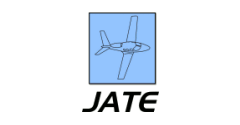Abstract
According to the Federal Aviation Administration (FAA), the number of runway incursions are rising. The configuration of runways and taxiways at airports has been identified by the FAA as possibly being related to the number of incursions. In this paper, the relationship between airport geometry factors and the number of runway incursions at specific United States airports is explored using statistical analyses. Airport operations data from the FAA Air Traffic Activity System, runway incursion data from the FAA Aviation Safety Information Analysis and Sharing System from 2009 through 2013, and airport geometry data created using airport geometry features from the FAA airport diagrams were collected. The 30 busiest airports with intersecting runways and the 30 busiest airports without intersecting runways were compared. As expected, the analysis of the data show that at alpha = 0.05 level, runway incursions occur at a more frequent rate for airports with intersecting runways compared to airports with no intersecting runways. In the second phase of statistical analysis, the number of incursions per 100,000 operations at the 63 busiest United States airports was analyzed using four airport geometry factors as independent variables in regression analysis. The resulting regression equation was significant at the alpha = 0.05 level and contained two independent variables: the number of crossing taxiways per runway and the number of runway intersections per runway. The equation and each variable in the equation are statistically significant and the equation explains 17.3% of the variation in incursions per 100,000 operations.
Recommended Citation
Johnson, Mary E.; Zhao, Xun; Faulkner, Brian; and Young, John P.
(2016)
"Statistical Models of Runway Incursions Based on Runway Intersections and Taxiways,"
Journal of Aviation Technology and Engineering:
Vol. 5:
Iss.
2, Article 3.
Available at: https://doi.org/10.7771/2159-6670.1121


